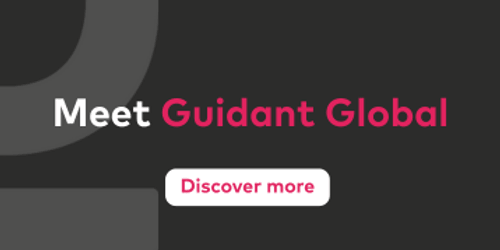

Author
3 minutes
Why employee retention and internal mobility are vital post-pandemic
Despite the challenges of the last year, employee engagement has seen some positive trends - with improved work/life balance and flexible working top of the list. The risk as we emerge into a ‘new normal’ is that employees will look elsewhere if they feel these gains aren’t kept. But with staff turnover costing businesses time and money, retaining top talent is more critical than it’s ever been.
In March 2021, we joined forces with TALiNT Partners to host a virtual discussion with HR and talent leaders on this very topic. How has the pandemic impacted employee retention strategies and internal mobility, and how should employers respond?
Here are three trends every talent acquisition leader needs to know about.
1. Digital skills competition will be bigger and broader
Digital transformation has been on the corporate agenda for some time; the pandemic simply turbo-charged the pace of change. The result has been the creation of new roles, and higher demand for new skill sets in existing functions.
Competition for talent in a remote working world will be fierce and essentially borderless. This means companies that wouldn’t normally be considered competition for staff due to their geographical location have now joined the fight for in-demand skills.
This has upped the ante when it comes to the need to retain talented people. It also raises the question: when should employers look to upskill staff from low-demand functions to fill urgent skills gaps and keep high-potential staff engaged?
2. A hybrid working model gets the best of both worlds
The pandemic has brought the need for flexible working options to the fore, as people discovered the personal and professional benefits of working remotely. But for employers who want to retain their best people, a carefully balanced approach is needed.
Those that offer no flexibility will struggle to retain and attract talent. But that doesn’t mean a completely remote working environment is suitable for everyone. Many workers will be keen to regain the social element of the traditional office, or to move on from working in less-than-perfect conditions at home. Finding the right balance will be crucial.
3. Leveraging internal mobility and technology is key
Employees have a growing appetite for training, education and development that should be leveraged right now to stop people leaving for other opportunities. With the competition for talent increasing, making internal mobility difficult is a sure way to make it easy for other organisations to poach your staff. If you don’t invest in people, your competitors will.
Our event attendees said they plan to use the increasingly sophisticated HR tech tools that are available to train and develop staff, and to give HR teams better visibility of existing talent and skills. Mapping your workforce in this way, so internal candidates become your first port of call for new hiring needs, will help retain high performers and streamline external recruitment costs.
5 top tips for retaining employees
Clearly, employee retention and internal mobility are top of the talent agenda at the moment. But what steps should you be taking now to convince your best employees to stay?
Here are five great ways to improve employee retention and mobility in 2021 and beyond.
- Understand how your offer is different now
Very few businesses look the same as they did prior to the pandemic. As a result, what makes them appealing to staff now is very different. You may have an amazing, new office space that staff loved working at two years ago. Now, though, this is likely to be less important. Take an honest look at your company, how it currently operates, what’s changed and re-evaluate what your staff want.
For many employers, it’s likely the actual delivery of work will be done remotely and that office spaces will be used mostly for collaboration, interaction and creativity. Are your existing offices fit for this purpose? Reassess and rework your physical spaces to ensure they provide the engaging environments that people will expect. - Rethink your approach to acquiring skills
A strategic and effective approach to the ever-changing skills needs of a business is one that loops in internal mobility plans. Could you use the apprenticeship levy, for example, to retrain staff and move them into high-demand and low-supply positions? If certain roles have been hard to fill – tech and digital jobs, for example – reskilling staff could help retain your best employees while also filling resourcing gaps.
If we’ve learned one thing over the last 18 months it’s that the technical skills our organisations need can change drastically at short notice. But with the right people, who have the right soft skills such as adaptability and resilience, employers can truly future-proof their workforces. - Consider how you communicate
Our teams have never faced such a disconnect as the one they’ve faced over the last 18 months. With remote working set to remain for the long term, adjusting how you communicate and encourage peer discussions will be key to keeping staff motivated and reducing employee turnover rates.
At Guidant Global we use OpenBlend, a people-centric performance management tool, to encourage better communication between employees and managers - and it’s proven hugely valuable during the pandemic. It’s helped our people and their managers identify the personal and professional factors that enable them to be their best at work. These open conversations empower our people to take greater control of their career progression, and to feel comfortable raising anything that needs to change. - Tailor your Total Talent approach
In an ideal world, HR and procurement teams would have the processes in place to take a total talent approach to resources that combines internal and external skills. But the truth is, most organisations aren’t yet in a position where this ideal is fully reachable.
Progress is being made, but one of the challenges that organisations will face is that there is no one-size-fits-all solution. Total Talent Management needs to be tailored to your organisation and its people. It needs to look at the entire talent spectrum for your business and scrutinise everything from your contingent resources and use of Statement of Work, right through to what internal resources can be developed to fill gaps. - Keep the message authentic
Never forget that your people live and breathe your business, even if it’s in a remote capacity at the moment. Promoting a culture or employer value proposition that isn’t an authentic representation of your company and its people will only have a negative impact on job satisfaction and employee turnover.
At Guidant Global, we’ve developed a culture that has the wellbeing of our people at the heart of everything we do. And that’s what so many of our employees can relate to. We can retrain and reskill individuals but they need to feel like an authentic ‘Guidant person’ - not just a worker assigned to a set task.
Talk to us about your talent plans
Internal mobility and employee retention are going to play critical roles in business recovery over the cohttps://www.guidantglobal.com/contactming months. The tips above are a great starting point, but if you need talent management advice that’s tailored to your business, we can help. Contact us today.
Insights to drive workforce performance
Workforce insights in your inbox
Sign up for our newsletter with the latest workforce management news, insights, analysis and more.
Australia
Suite 1403, Level 14
309 Kent Street
Sydney
NSW 2000
United Kingdom
United States
27777 Franklin Road
Suite 600
Southfield
Michigan 48034







